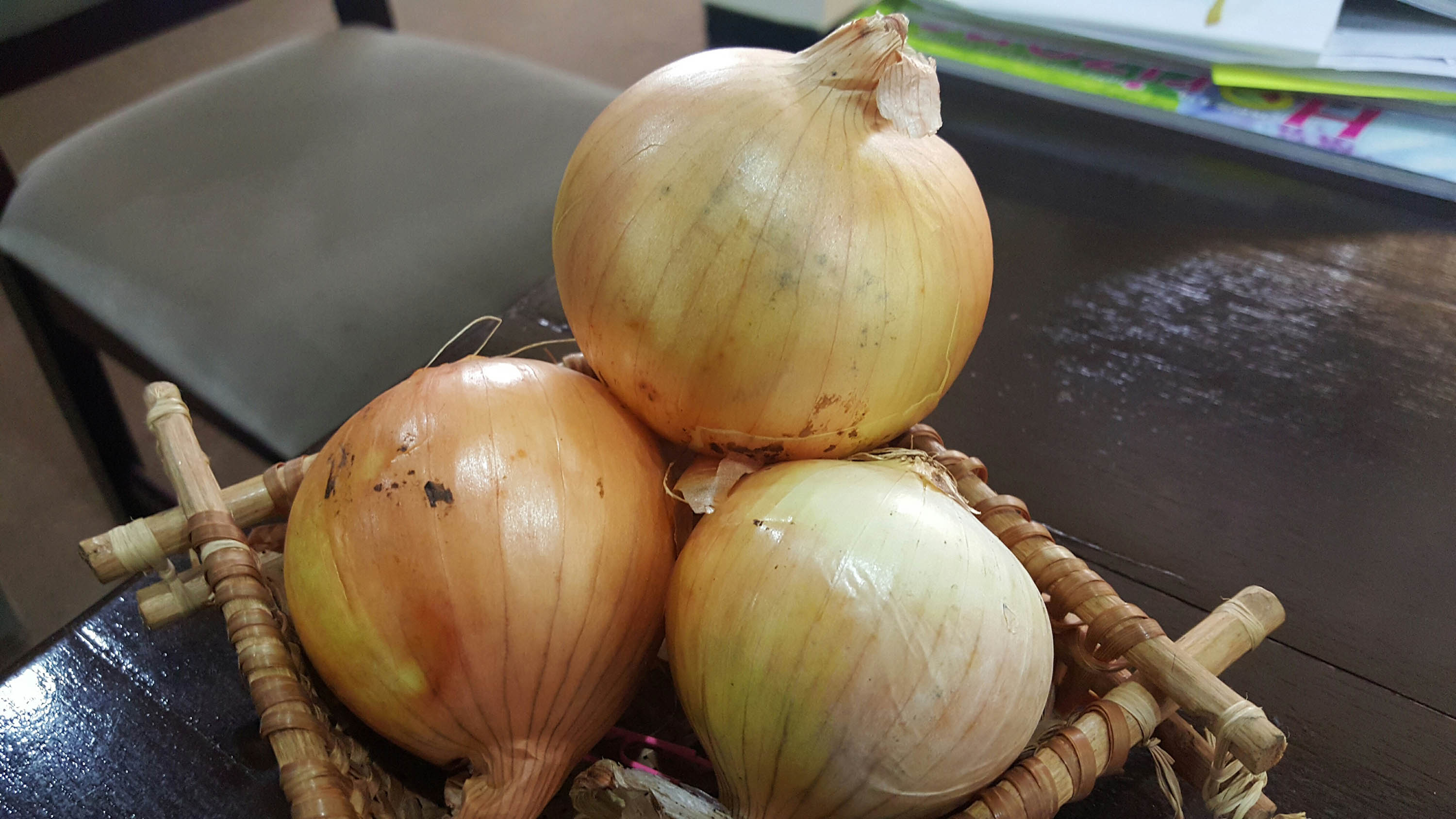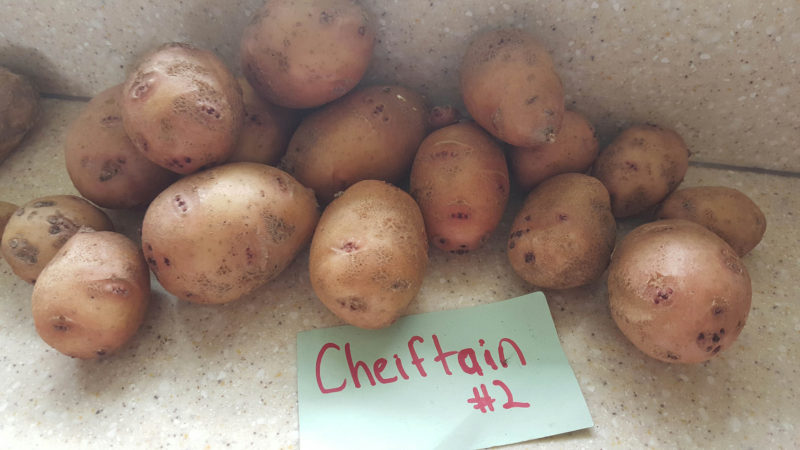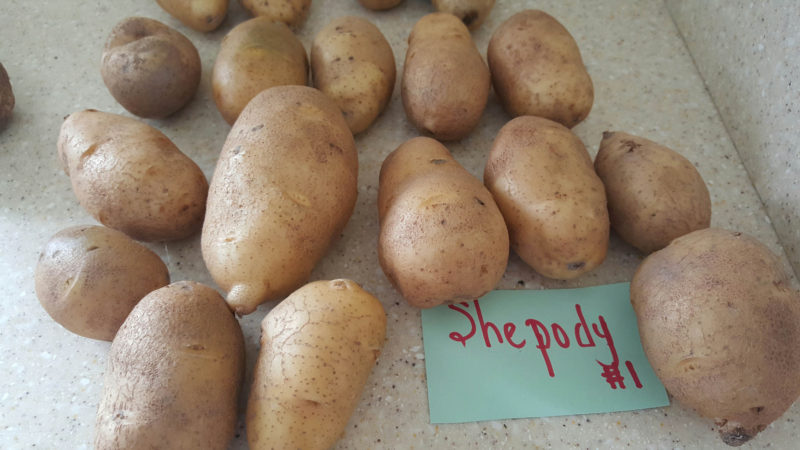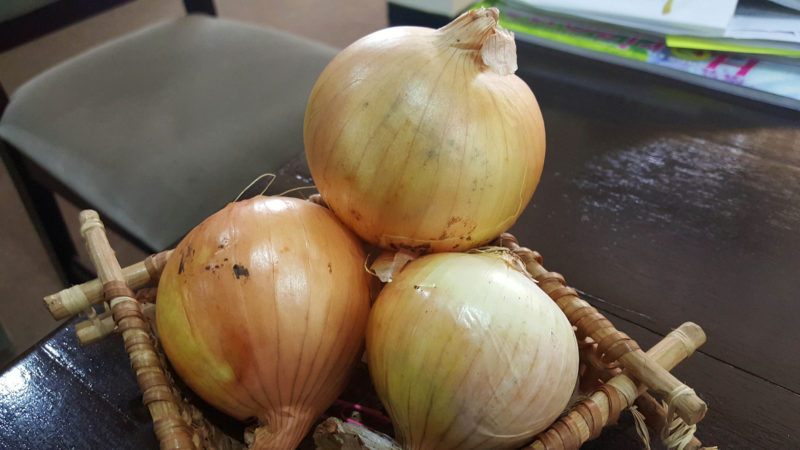With local farmers yielding successful results from the ongoing trial cultivation of both potatoes and onions, Chief Executive Officer (CEO) of the National Agricultural Research & Extension Institute (NAREI) Dr. Oudho Homenauth says Guyana’s importation of the commodities could be significantly reduced in the next three to five years.
In an interview with Stabroek News, Dr. Homenauth said the second trial cultivation is still in progress at different locations around the country, and so far many farmers have yielded successful results.
According to data from the Bureau of Statistics, Guyana imported 10 million kilogrammes of potatoes in 2016 at a cost of US$4.989 million. Dr. Homenauth pointed out that in 2015 almost US$3 million was expended on the importation of approximately 5,674.62 tonnes of potatoes.
In the case of the onions, US$1.459 million was spent to import 3.987 million kilogrammes in 2015, as compared to US$1.585 to purchase 4.016 million kilogrammes in 2014, according to data from the Bureau of Statistics.

The potato and onion programmes were implemented through the non-profit organization, World Uni-versity Service of Canada and the Canadian-funded Promotion of Regional Opportunities for Produce through Enterprises and Linkages (PROPEL).
The organizations have provided support through the establishment of Farmer Field Schools and supplying seedlings to farmers, with funding to the tune of CAN$100 million, compliments of the Canadian Government.
Dr. Homenauth said that the average yield for potatoes is about 16 tonnes per hectare, and to satisfy local demand, some 870 hec-tares would have to be cultivated.
He noted that “the focus is on continuing with food security and with the reduction of imports as far as possible. The other aspect is on increasing exports…”
He added that “increasing production has to be concomitant with export and value addition” and that PROPEL, which is a regional project “focuses on market opportunities, not only for exports but for the domestic market.”
Based on the quality and the yields, Dr. Homenauth said the farmers can easily earn a price of $80 per pound of potato.
He said too that farmers in Region 9 have cultivated most of the commodities, and that while they have always faced an issue with transportation out of the hinterland, the main focus of introducing the crops there, was also for food security.
He assured though that if the crop is successful at the Santa Fe Farm in Region 9, “…it can be trucked out at a cheaper cost rather than using air transport.”
He noted too that when the potatoes are taken to Regions 7 and 8, the price per pound rises to about $300 to $400.
Failure
According to Dr. Homenauth, the initial potato cultivation trial was a failure, after heavy rainfalls caused the crop to be washed away, except for the cultivations in Kato and Parima in Region 8.
However, being aware of the successful implementation of the potato programme in Jamaica, he decided to visit there to observe their methodology.
To avoid making mistakes for the second trial, he also decided to go a step further and to bring the expert from Jamaica, to ensure they “get it right” this time.
The CEO always had the opinion that “potatoes were more suited for the mountains or the cold areas [but] I was pleasantly surprised that [they grow] on flat lands…”
Together with PROPEL, NAREI identified various locations around the country and the farmers cultivated five new varieties.
In Regions 7 and 8, there are quarter acre farms, while at the Santa Fe Farm in Region 9, two acres of the crop are being tested.
There are also smaller plots at St. Ignatius and surrounding areas.
According to Dr. Homenauth, while the crop is successful so far, there are some farmers who were not so lucky. In one month’s time, NAREI would be in a position to make a pronouncement on the crops.
He was always of the view that potatoes were more suited for the “cold areas [but] I was pleasantly surprised that…” they are being grown successfully in tropical climate.
He was confident that Guyana would succeed with the programme because “the ones grown here were [quite] competitive…”
He noted that potatoes require a significant amount of water, compared to many other crops, while the soil has to be loose, so the water can penetrate easily.
He added that temperature variation is also needed for at least about eight to ten weeks, and that is why it is important to choose the right time for the crop.
He noted too that all of the onions “did not perform” and that “you have to know the duration for the different varieties.”
Mercedes
The total weight of three onions of the Mercedes variety displayed on Dr. Homenauth’s desk was one pound. The onions were harvested at Hopetown, West Coast Berbice, and the variety is said to be the most successful in terms of production.
The onions had been there for two weeks already and still appeared fresh, even though they did not have the amount of scales that are necessary for their preservation.
He said “onion is a 75-day crop but to get more scales (or skin) on it, you have to leave it longer in the fields” after harvesting. He noted though that even if it is removed from the field right after harvesting, “it would still be fresh.”
In the case of potatoes, the five varieties are Chieftain, which was said to be the best, Shepody, Kennebee, Spunta and Bristol Pride.
Meanwhile, he was happy that they are engaged with many small farms because the idea was to allow a lot of farmers to obtain the practical experience.
He said too that the over the years, they have identified other commodities in their agriculture strategies, including plantains and coconuts, on which they have done some work with input from PROPEL.








